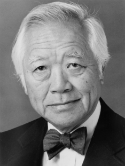Stage I rectal cancer: Identification of high-risk patients Journal Article
| Authors: | Blumberg, D.; Paty, P. B.; Picon, A. I.; Guillem, J. G.; Klimstra, D. S.; Minsky, B. D.; Quan, S. H.; Cohen, A. M. |
| Article Title: | Stage I rectal cancer: Identification of high-risk patients |
| Abstract: | Background: Stage I rectal cancer (T1, T2 N0) is currently treated by surgical resection alone. Despite adequate surgical resection, approximately 10-15% of patients will develop recurrence. Identification of patients at high risk for recurrence could potentially lead to an improvement in outcome by selection of these patients for adjuvant therapy. Methods: Between June 1986 and September 1996, 211 patients with primary rectal cancer (stage I) were treated by radical surgical resection alone. The medical data of all patients were entered into a database and prospectively followed. The following 10 prognostic factors were correlated with recurrence and tumor- related mortality: patient factors: age, gender, and preoperative carcinoembryonic antigen level; tumor factors: location from the anal verge (< 6 cm vs. ≤ 6 cm), T stage (T1 vs. T2), intratumoral blood vessel invasion (BVI), intratumoral lymphatic vessel invasion, presence of tumor ulceration, and histologic differentiation; and treatment-related factors: extent of surgical resection - abdominal perineal resection versus low anterior resection. Univariate analysis of the effect of the prognostic factors on recurrence and tumor-related mortality were performed by the method of Kaplan-Meier and log rank test. Independent prognostic factors were determined by a multivariate analysis performed using the Cox proportional hazards model. Results: The overall 5-year actuarial recurrence was 12% and tumor-related mortality was 10%. Independent predictors of recurrence were male gender and BVI. Independent predictors of tumor-related mortality were male gender, BVI, and poorly differentiated tumors. Conclusions: Despite radical resection, patients with stage I rectal cancer with male gender, BVI, and poorly differentiated tumors should be considered high-risk patients. |
| Keywords: | adult; cancer survival; controlled study; treatment outcome; aged; aged, 80 and over; middle aged; survival rate; major clinical study; histopathology; cancer recurrence; patient selection; cancer adjuvant therapy; combined modality therapy; cancer staging; follow-up studies; cancer diagnosis; lymph nodes; neoplasm staging; prospective studies; linear models; neoplasm recurrence, local; proportional hazards models; carcinoembryonic antigen; risk factors; age factors; cancer mortality; high risk patient; risk assessment; cancer invasion; abdomen; multivariate analysis; neoplasm invasiveness; sex factors; analysis of variance; rectal neoplasms; rectum cancer; ulcer; blood vessels; perineum; anal canal; databases; actuarial analysis; humans; prognosis; human; male; female; priority journal; article |
| Journal Title: | Journal of the American College of Surgeons |
| Volume: | 186 |
| Issue: | 5 |
| ISSN: | 1072-7515 |
| Publisher: | Elsevier Science, Inc. |
| Date Published: | 1998-05-01 |
| Start Page: | 574 |
| End Page: | 580 |
| Language: | English |
| DOI: | 10.1016/s1072-7515(98)00018-0 |
| PUBMED: | 9583699 |
| PROVIDER: | scopus |
| DOI/URL: | |
| Notes: | Article --Presented at the 83rd Annual Clinical Congress of American College of Surgeons in Chicago, IL in October 1997 -- Export Date: 12 December 2016 -- Source: Scopus |
Altmetric
Citation Impact
BMJ Impact Analytics
Related MSK Work








